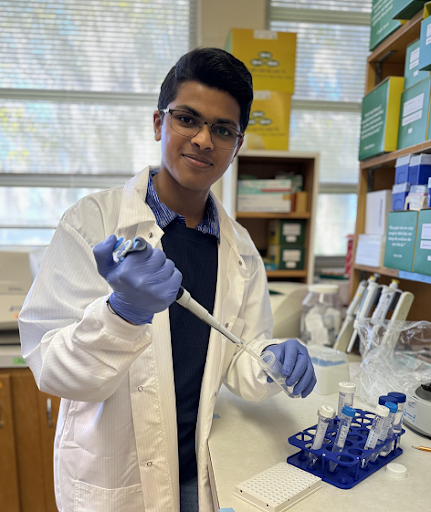Gainesville High student speaks at United Nations Science Summit in New York City

Sixteen-year-old Abhith Kasala has been too busy to schedule a test for his driver’s license lately. Instead he’s been preparing the presentation he made at a United Nations Science Summit in New York City at the end of September.
According to its website, “the Science Summit serves as a dynamic platform for showcasing cutting-edge research, sharing knowledge and fostering inclusive international collaboration.” Thousands of scientists, policy-makers and others will be gathering to discuss ways they can work together to tackle problems like poverty and hunger, climate change and other issues.
Kasala, a junior in Gainesville High School’s Cambridge Program, was invited to the UN Science Summit to speak to about 200 attendees on Friday, September 27 about his research. He’s spent six years on a project focused on measuring and reducing microplastic pollution, including the development of a sustainable water filtration system.
Kasala’s work has already won national and international recognition, including prizes at the 2024 International Science and Engineering Fair and the U.S. Stockholm Junior Water Prize competition. He’s also had an article published in the Florida Water Resources Journal. But he recognizes the opportunity to address an international audience at the Summit is something special.
“It’s definitely a dream,” he said. “It’s such a huge opportunity. I’m really excited by the networking opportunities with the delegates, all the stakeholders, scientists and policy makers.”
The Summit website says it aims to “bridge the gap between science and policy” and “facilitate the exchange of ideas and the development of actionable strategies to address global challenges.”
“I’ll be able to share my research with all those global leaders participating, and hopefully implement my solution and make a positive impact on the world,” he said “The time is now, and it’s going to take a collaborative effort by scientists, industry, and policy-makers to solve this problem.”